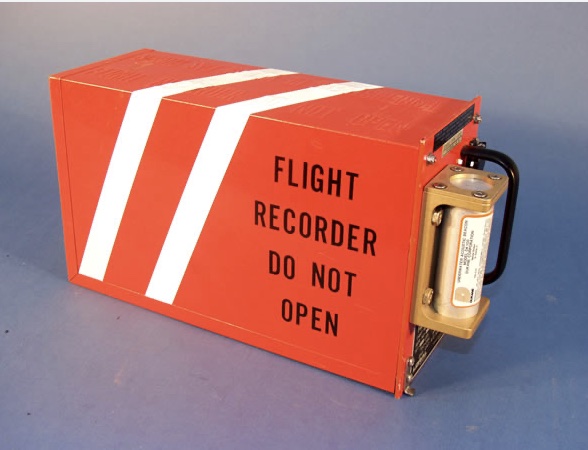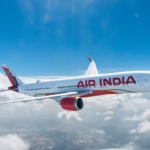After the bombing of Air India flight AI-182 (Toronto–Delhi) on June 23, 1983, news agencies covering the worst air disaster in history, while quoting aviation experts, started screaming about the “Black Box.” Not many had ever heard of a “Black Box” as something magical that could divulge not only whatever transpires between pilots and air traffic controllers (ATCs) en route on a flight but also the cockpit conversation between the pilots.
Those were the days when there were no social media handles or Google to search for details online about “Magic Boxes” or “Black boxes.” I remember, late in the evening, when our then editor-in-chief, Prem Bhatia, walked into the newsroom. No one had any idea what the “Black Box” was all about.
“Does anybody know about this device?” asked Bhatia before suggesting, “Can we talk to some aviation experts or professors in the Department of Aviation at Punjab Engineering College?”
I volunteered to find all details about the “Black Box,” saying I had a new book published by the Boeing Company. “What are you waiting for? Go and grab your book and do a piece on the Black Box,” said Bhatia.
I returned within half an hour to tell Bhatia that this “Black Box” contains all flight data and is basically “orange” in color and is located in the tail of the aircraft. “So how come it is called Black Box?” quipped Bhatia. Since then, a lot has been written about black boxes to solve mysteries shrouding various major aircraft accidents.

Though called a ‘black box,’ the metal case is orange, as the brighter color makes it easier to identify in debris. It refers to not one, but two critical data recording devices: the Flight Data Recorder (FDR) and the Cockpit Voice Recorder (CVR).
The equipment is located in the tail of the aircraft, which, in Thursday’s crash, was the only part of the entire plane that remained intact. Striking visuals from the scene show the entire tail section jutting out of the corner of the building on the medical college premises.
After the Ahmedabad air crash, the Aircraft Accident Investigation Bureau (AAIB) recovered the black box from the wreckage of Air India’s Boeing 787, seeking crucial evidence into the causes of the deadly crash that killed at least 241 passengers.
Barring some fragments of its wings and one engine cover, the rest of the aircraft seemed to have been reduced to rubble by the massive explosion caused by the fully laden fuel tanks containing 1.25 lakh liters of aviation turbine fuel.
A team of U.S. investigators from its National Transportation Safety Board, along with the American aviation regulator, the Federal Aviation Administration, will assist the AAIB with its investigation into the crash. This is the first crash involving a Boeing 787 aircraft.
A lot was said and written about the condition of the ill-fated aircraft as it took off from Ahmedabad. Many passengers on board its earlier flight from Delhi to Ahmedabad complained about its upkeep, including non-functioning air conditioning, rickety and broken seats, and other issues that got highlighted from time to time.
The new management of Air India under Tatas had introduced new aircraft on some prestigious routes, including those serving select U.S. destinations; other destinations, including Toronto, still had “problematic” aircraft.
I experienced traveling by such aircraft twice after the changeover in Air India management.
This is the story I wrote after I chose to travel by Air India in August 2023:
When do I travel on an airline despite calls to boycott threats?
by Prabhjot Singh
Journalism is all about taking a risk to tell your readers the real story of a threat or a dispute held out in the public domain. Last week, I had yet another tryst with destiny by venturing out to fly Air India despite threatening calls by a separatist group to boycott its operations worldwide. The threats looked both menacing and serious, as memories of the 1985 disintegration of Air India flight 182 over the Atlantic region as a result of a bomb explosion are still fresh for members of the Indian Diaspora.
Since Canada figures high on the anti-India list because of recent “provocative incidents” of its soil being used for separatist activities, the Air India boycott threat assumed additional significance and could not be dismissed lightly. Though the Canadian government reiterated that it respected the sovereignty of its longtime friend and trade partner, India, it could not go back on its enshrined principle of freedoms, including free expression of views.
The separatist group Sikhs for Justice, demanding a homeland for the Sikhs, had given a call for a complete boycott of Air India operations worldwide beginning November 19, the birth anniversary of slain Indian Prime Minister Indira Gandhi. It was she who had ordered Indian defense forces to storm the Golden Temple complex, the sanctum sanctorum of the Sikhs, in June 1984, to flush out Sikh militants operating from there. A year after Operation Bluestar, flight 181 of Air India, which took off from Toronto for Bombay, had all 323 passengers on board, including 22 crew members, perish in a mid-air explosion that shook the world.
After repeated calls for a referendum on the Sikh homeland issue in the recent past, group head Gurpatwant Singh Pannu, in a video released early this month, cautioned Sikhs against traveling by Air India on or after November 19. Though Pannu clarified later that he never intended any “violence,” his call was only for a total boycott of India’s national flag carrier, which had been brought over by a private company, the Tatas.
As the Sikhs for Justice has chosen Canada for most of its recent operations, its cascading effect has been reflected in the rapid deterioration of bilateral relations between the two nations.
Canada does not want a repeat of the 1985 Kanishka disaster. It has ordered beefing up security at all its airports, especially for all operations of Air India, on its soil.
I made my reservation to travel to Chandigarh via New Delhi from Toronto by Air India flight AI 188 on November 24. It was an army of private security agencies that greeted all Air India passengers at Terminal 1 of Pearson International Airport. Each passenger was put through some soft questioning before he or she was allowed to move to the check-in counter.
Despite the threat, there was no visible impact on the number of passengers travelling by Air India. More than 90 per cent of its 342 seats were occupied. Interestingly, more than 60 per cent of passengers on the flight were Punjabis and Sikhs. They included young couples with toddlers, senior citizens, and some young executives.
These temporarily employed eagle-eyed guards then followed passengers to the security checkup. As if proper screening by the trained security was not enough, some passengers were randomly picked for another round of examination. Frisking, use of metal detectors, computer-generated scans, and re-examination of cabin bags, including laptops and other electronic gadgets, make passengers aware of an invisible threat looming large in the air.
Some passengers protest against the repeal of physical examination and frisking; they are politely told that it is being done for their safety and security. It is not the end. As passengers head towards the departure gate, a long, unending queue greets them again. Irrespective of their physical status, their health, or the class of their travel, each one has to join the queue for another round of screening, frisking, and examination of their cabin bags.
Before the boarding starts, some passengers are subjected to yet another round of physical checks. Their travel documents are carefully scrutinised before they are allowed to emplane.
Security protocols end only after passengers get to their allotted seats. Once the aircraft takes off, there is some resistance from checks and frisking, but the threat still looms large in the air as cabin crews miss no opportunity to caution and warn you against any unforeseen calamity.
I tried to talk to a couple of other passengers. “I have never travelled in such a terror-filled environment before,” remarked Joginder Singh of Delhi. He was returning home after visiting his son, a student of supply chain in Toronto. He was, however, not happy with the condition of the aircraft. He pointed towards broken seats, non-functional audio-video attachments, and defunct wi-fi services.
Some seats in business class were not allocated as they were officially “reserved for crew members”. No expertise was needed to declare them “broken” and “unfit for occupation.”
“I do not fear death, as everyone has to die one day,” he said, revealing that even after he learned about the threat to Air India flights, he refused to change the airline.
Nayana, a crew member, said it was a new, though scary, experience for her. “But it is part of my duty, and I refused to opt out of the flight. Earlier, there was no insurance for members. But now, much before this threat, our new management covered us and our families with full health insurance,” she said.
Another crew member, who does not want to be identified, held that the airline and airport staff have taken all possible steps to make the travel as safe as possible. All checked-in bags have been screened, and each passenger has been personally questioned about the contents of his or her bag. The flight, he said, was fully booked, revealing that there had been no cancellations even after the video carrying the threat went viral.
Luckily, our journey went off peacefully as we landed in Delhi five minutes ahead of our scheduled arrival.
– To be continued
Disclaimer: The opinions and views expressed in this article/column are those of the author(s) and do not necessarily reflect the views or positions of South Asian Herald.






